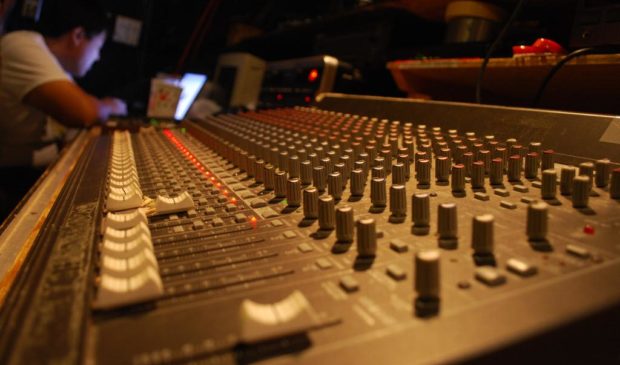About the Author
Chad Swiatecki is a 20-year journalist who relocated to Austin from his home state of Michigan in 2008. He most enjoys covering the intersection of arts, business and local/state politics. He has written for Rolling Stone, Spin, New York Daily News, Texas Monthly, Austin American-Statesman and many other regional and national outlets.
Newsletter Signup
The Austin Monitor thanks its sponsors. Become one.
Most Popular Stories
- Latest State of Downtown report shows the city core’s businesses and housing are in transition
- Cap Metro to shelve 46 new electric buses for a year after manufacturer bankruptcy
- Jesús Garza disputes allegation that he violated city ethics rule
- Mobility Committee hears public concern regarding expansion of MoPac
- Council gives first reading OK to major development on tiny slice of land
-
Discover News By District

Mosaic hub closure brings scrutiny, urgency to city’s creative space bonds process
Monday, August 22, 2022 by Chad Swiatecki
News of the impending closure of the Mosaic Sound Collective creative hub has brought attention to the growing need in the arts community for the city to deliver on its assistance efforts, specifically the $12 million on bond funding voters approved in 2018 to preserve and open new creative spaces.
For years, Mosiac, which opened in 2017 in East Austin, had been in talks with city leaders about the project’s eligibility and likelihood of receiving some of the $12 million. That money would have helped to close the deal on the five-year lease/purchase agreement for the 25,000-square-foot former juvenile detention facility Mosaic entered into in 2016.
With the city waiting years to move forward with the bond money – in part to allow for the long-in-coming formation of the Austin Economic Development Corporation to take charge of the funds – Mosaic and other arts groups have had to struggle through the pandemic and rising real estate prices in Austin.
John Riedie, CEO of the Austin Creative Alliance, said more arts groups throughout the city are in danger of losing their spaces without meaningful help from the city or outside benefactors.
“Mosaic was a prime candidate with site control, some leases and cash flow, and they would have been a great candidate for creative spaces bond money, but we’re now going from having places where an organization has a space and needs around a half a million to close a gap to people without any space, and that raises the price because then you’re talking about having to buy land,” he said. “You’re going to see some very prominent cultural spaces that have been around for a while losing their spaces in the next year, and they could have avoided that by not sitting on this money the way they have.”
Since taking over administration of the bond funds and other money for creative spaces late last year, the EDC has conducted its request for proposals, evaluated entries and put together a short list of possible recipients, which have not been made public because of the sensitivity of real estate negotiations.
Prior to that handover, the city took roughly a year to clarify what kind of eligibility criteria it could use for evaluating applicants, with the music and arts commissions also having to weigh in with their preferences for how the money should best be distributed throughout the community.
The onset of the pandemic put a halt to most bond work while the city spun up several new community relief programs for the entire city. And when the EDC was finally codified by the city in late 2020, it took several months to begin operation and make its appraisals for how to handle the bond money.
Anne-Charlotte Patterson, chair of the Music Commission, said the EDC has quickly shown how well it can do its work, even with a small staff. She said she hopes the city moves forward with a new round of bonds for creative spaces in 2024 while also looking at how the EDC could be involved early on in real estate deals, such as the prolonged negotiations for the city’s land at Ryan Drive. That project, which has been in exclusive negotiations for roughly a year with one developer, is supposed to address affordable housing and creative space needs along with integrating upcoming transit improvements.
“One thing that what’s happening now shows us is the (EDC) is a nimble operation since they operate outside of the city’s constraints and have the power to move these projects forward quickly. I’m excited to see what they can do and they can really be a force in city real estate,” Patterson said. “I’m hopeful City Council and leadership in the city see the AEDC as a really strong partner for these kinds of projects, and that they’re allowed to take the lead.”
Photo made available through a Creative Commons license.
The Austin Monitor’s work is made possible by donations from the community. Though our reporting covers donors from time to time, we are careful to keep business and editorial efforts separate while maintaining transparency. A complete list of donors is available here, and our code of ethics is explained here.
You're a community leader
And we’re honored you look to us for serious, in-depth news. You know a strong community needs local and dedicated watchdog reporting. We’re here for you and that won’t change. Now will you take the powerful next step and support our nonprofit news organization?








